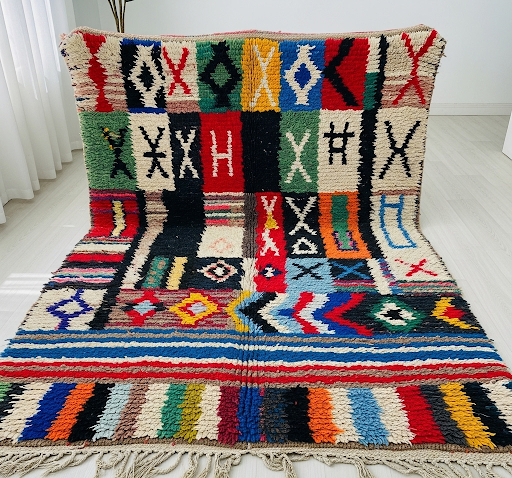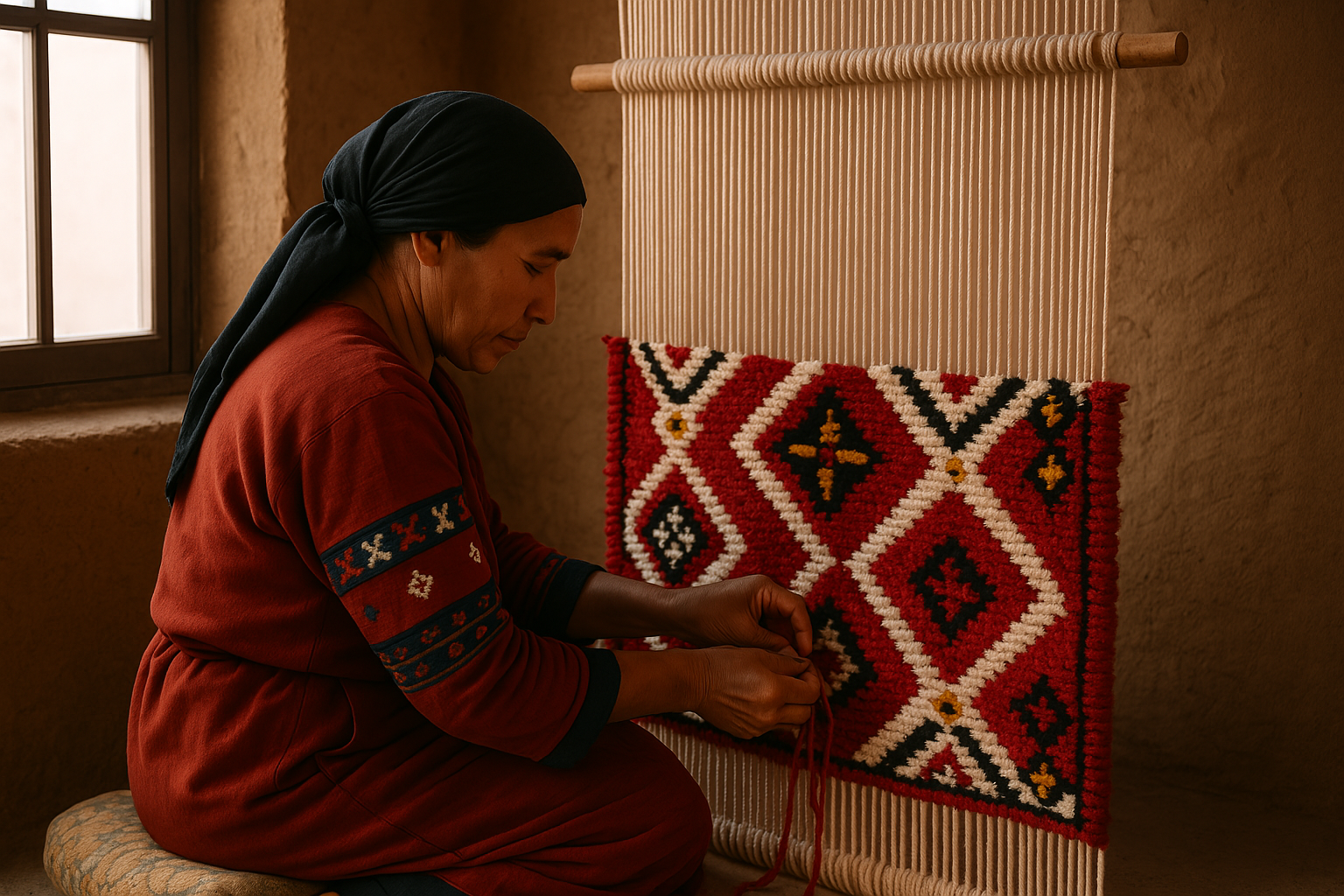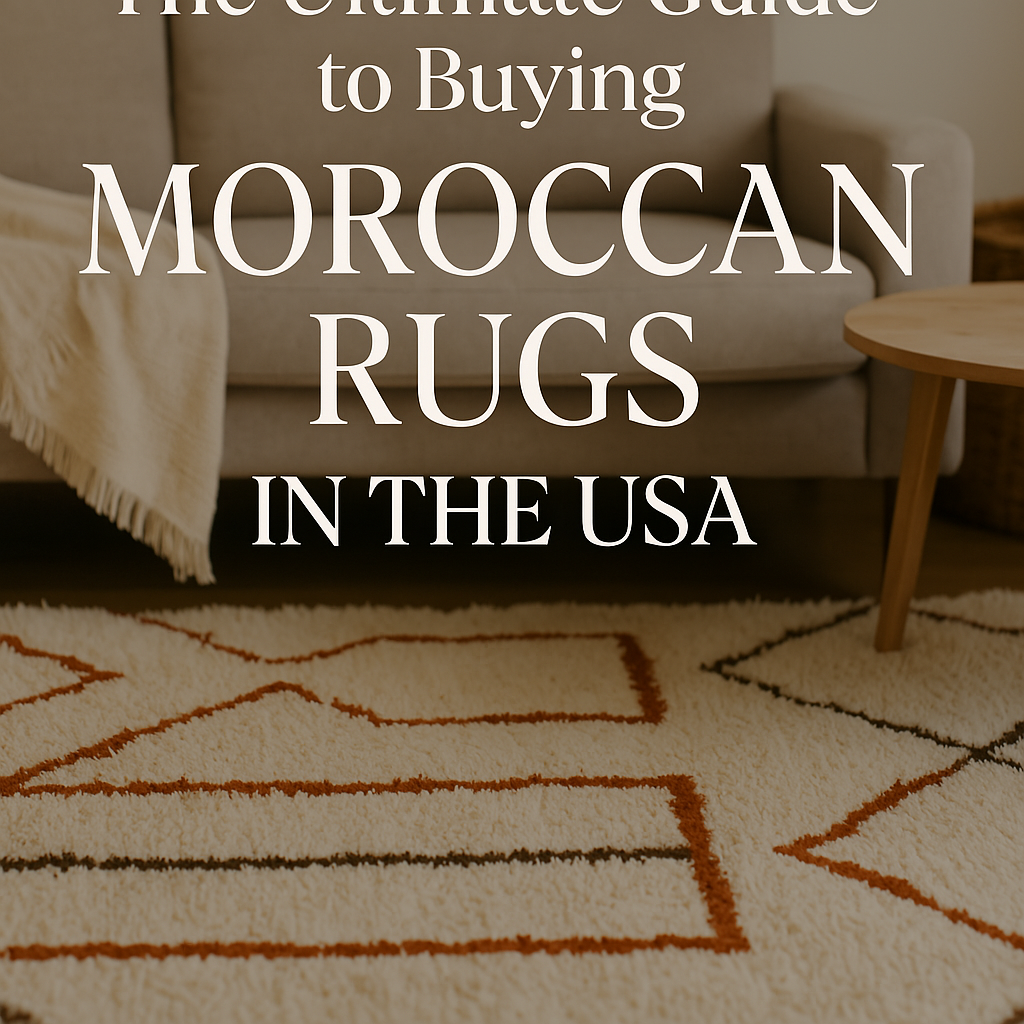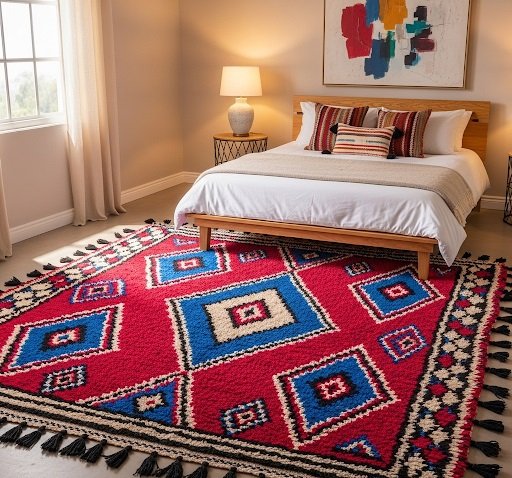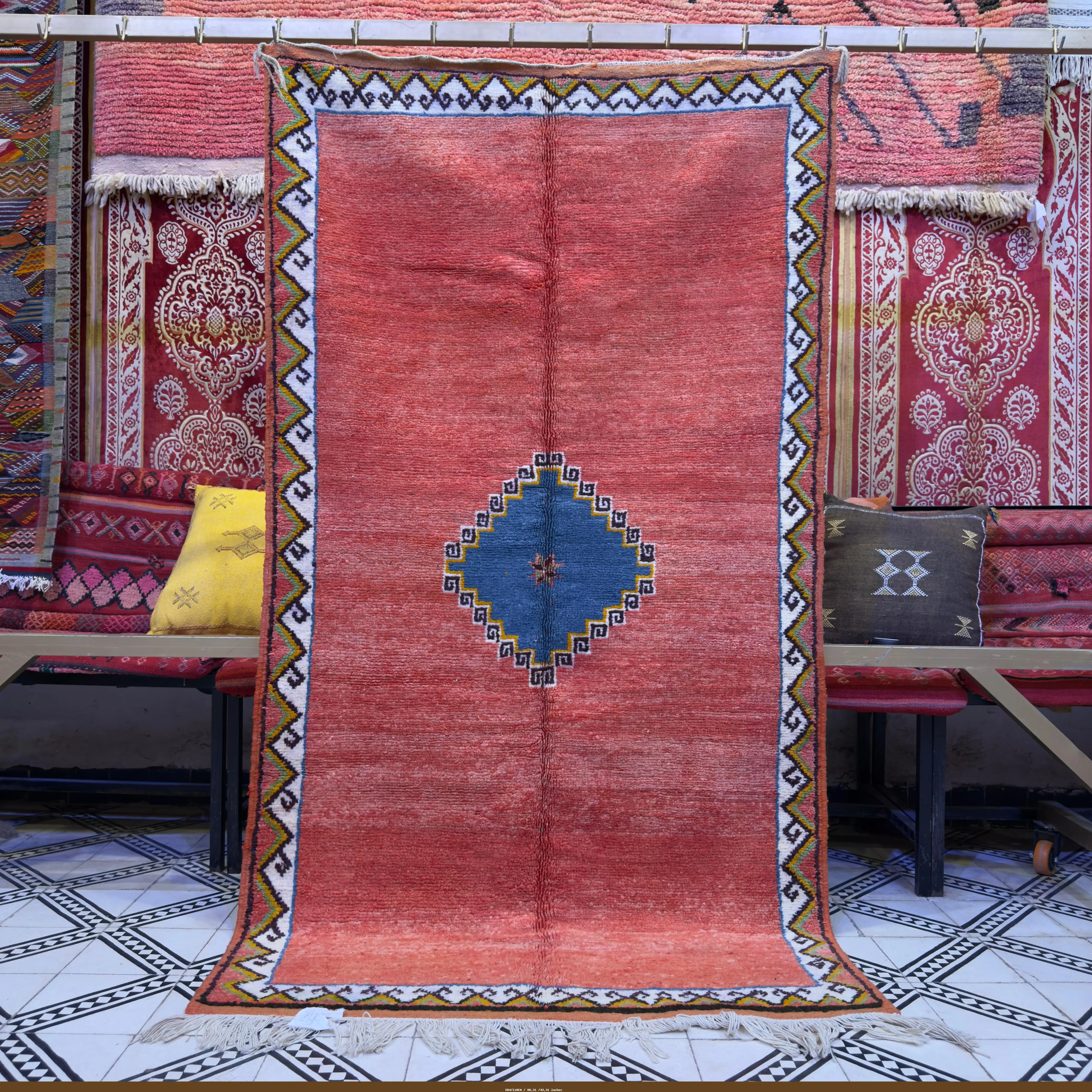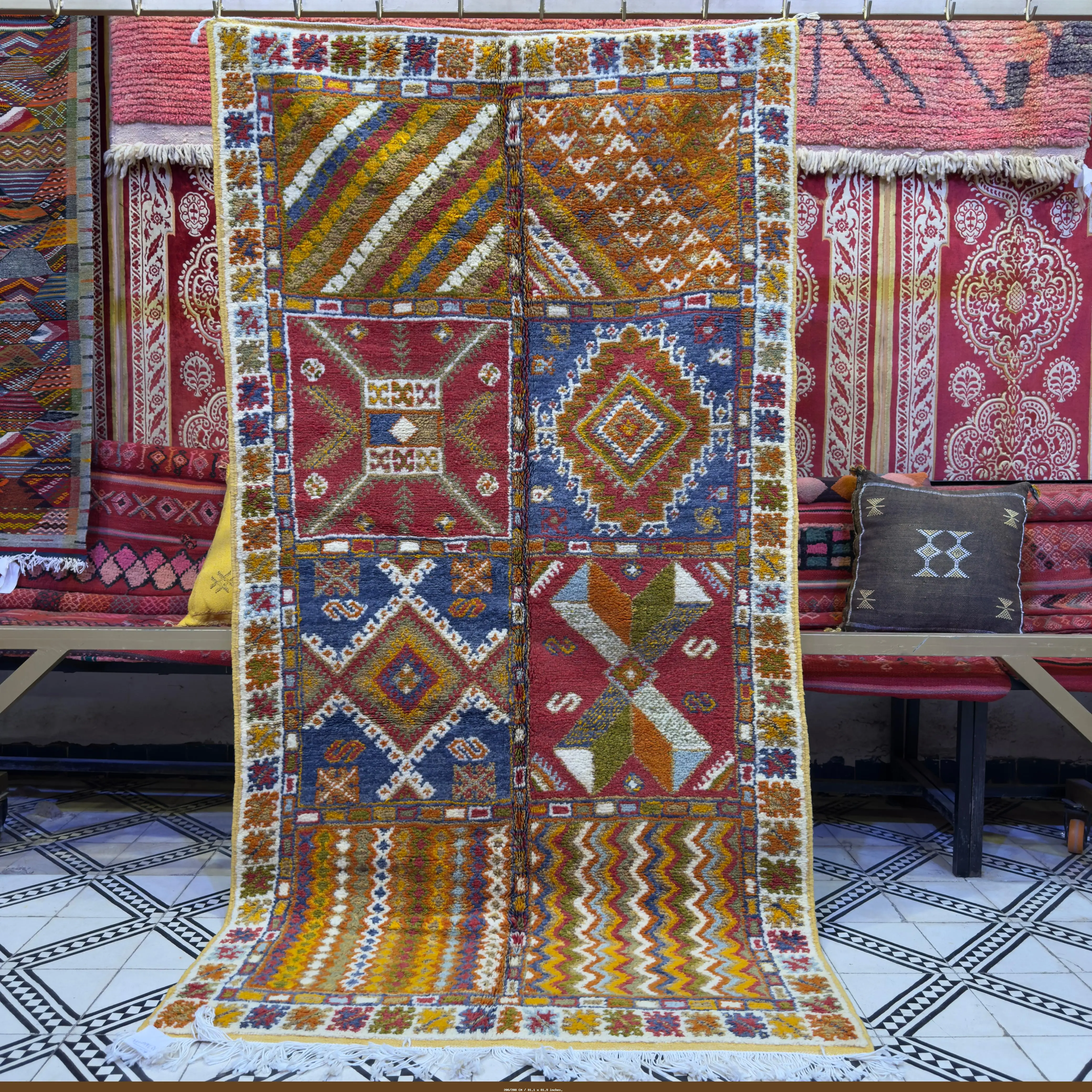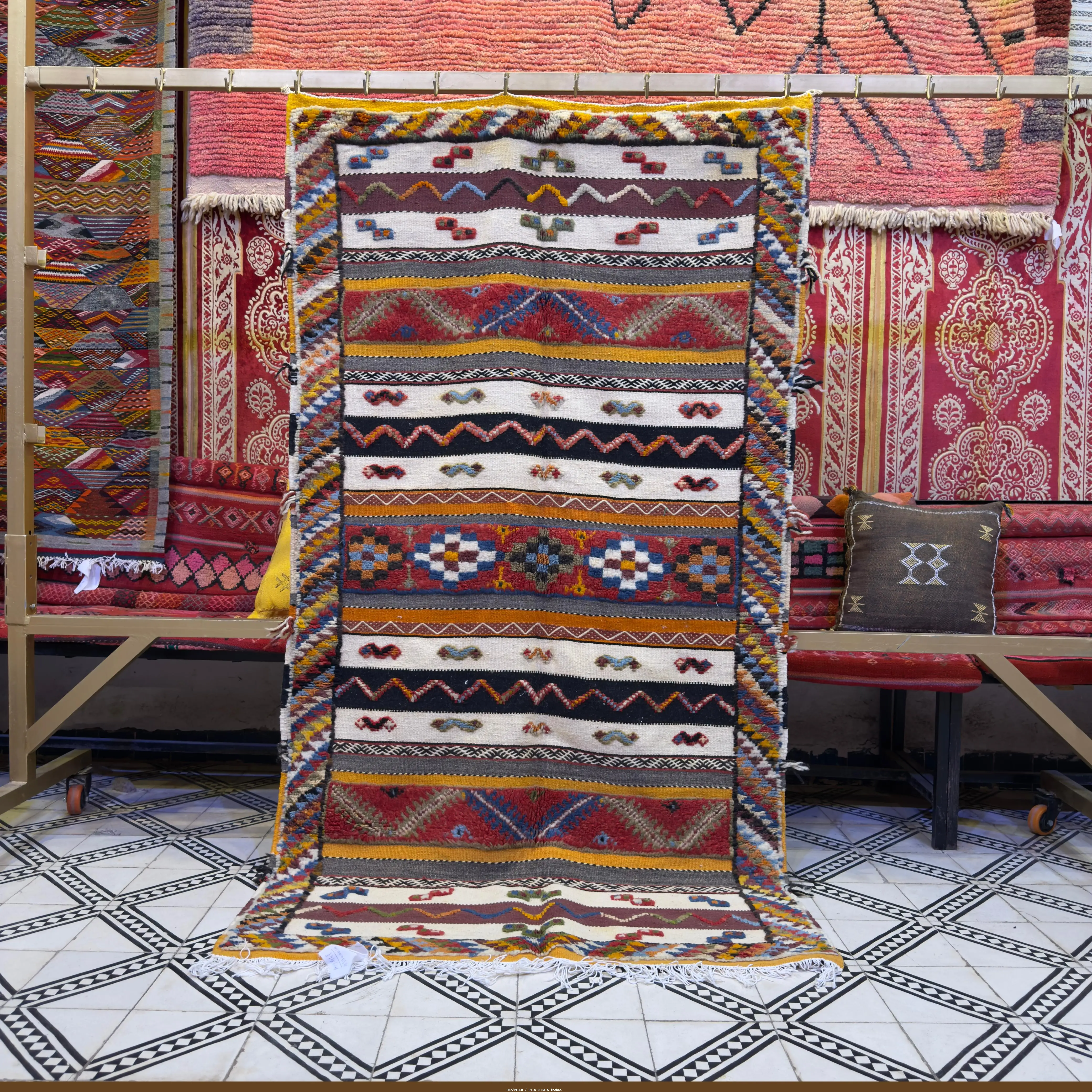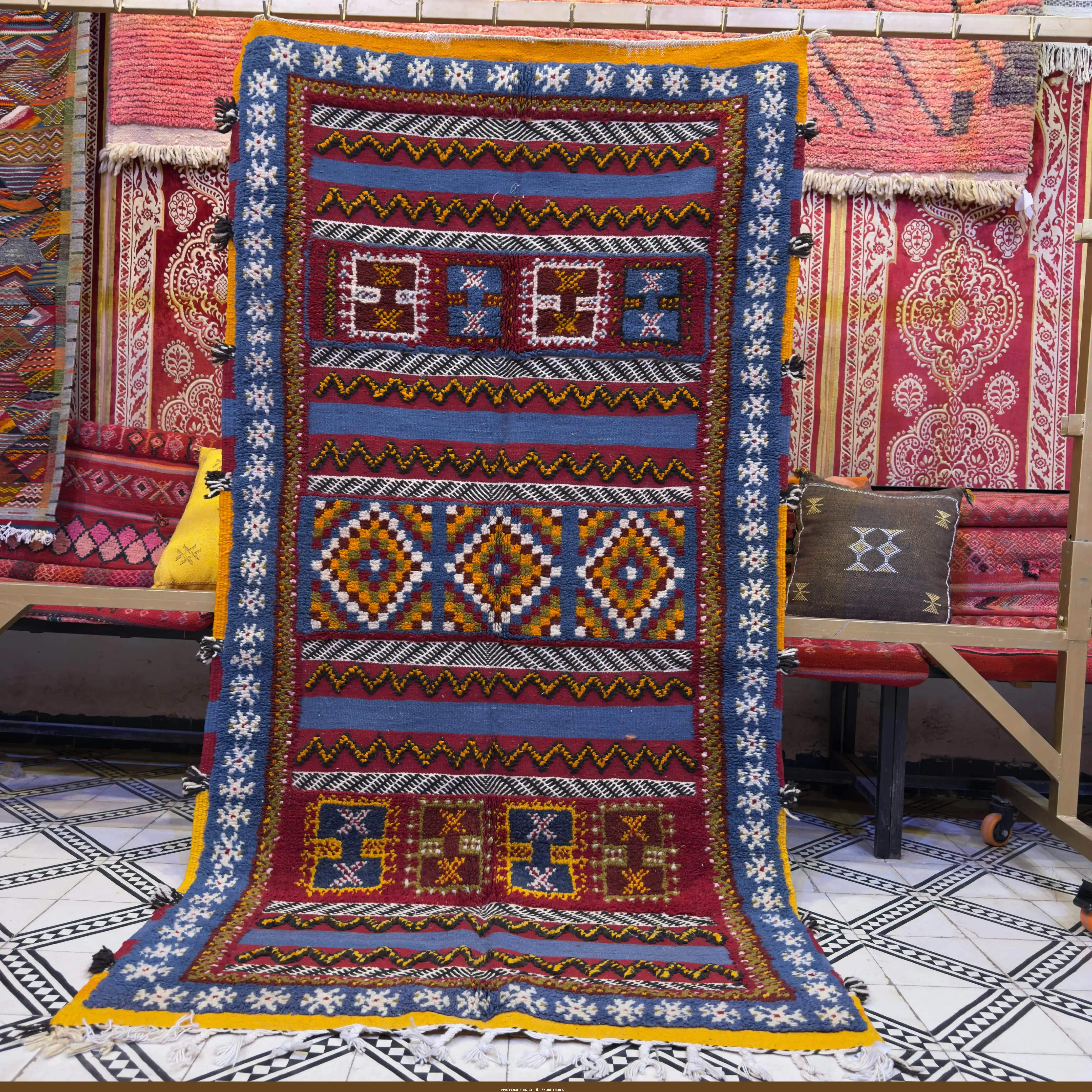A rug is more than just a floor covering; it's the anchor of a room's design, a source of comfort, and a statement of style. But in today's fast-paced, high-tech world, shouldn't your rug do more? Enter the technical rug: a perfect fusion of cutting-edge innovation and sophisticated design. Choosing the right one can elevate your home's functionality and aesthetic, but navigating the options can be daunting. This guide will walk you through everything you need to know to purchase the perfect technical rug that not only looks fantastic but also works harder for your home.
What Exactly Is a "Technical Rug"?
First, let's clarify the term. A technical rug isn't about wires and circuit boards (though some smart versions exist!). The term "technical" refers to the advanced materials, innovative construction techniques, and performance-driven features that set these rugs apart from their traditional counterparts. Think of them as the high-performance athletic wear of the flooring world. They are engineered to offer specific benefits like superior durability, enhanced stain resistance, non-slip properties, and even eco-friendly advantages, all without sacrificing style. A great technical rug delivers both aesthetic beauty and practical, long-lasting function.
Decoding the Materials: The Heart of a Technical Rug
The secret to a technical rug's performance lies in its fibers. While traditional rugs often use natural materials like wool or silk, technical rugs leverage advanced synthetic or specially treated fibers to achieve their unique characteristics.
-
Nylon: The king of durability. Nylon is an incredibly resilient fiber, making it the ideal choice for high-traffic areas like hallways, entryways, and family rooms. It holds its shape well under heavy furniture and resists crushing and matting.
-
Polypropylene (Olefin): This material is a champion of stain resistance. Its fibers are non-porous, meaning spills sit on the surface instead of soaking in, making cleanup a breeze. It's also fade-resistant, perfect for rooms that get a lot of sunlight.
-
Recycled PET (Polyester): For the eco-conscious homeowner, rugs made from recycled PET plastic bottles are a fantastic choice. They offer a surprisingly soft feel, are naturally stain-resistant, and keep waste out of landfills. This is a technical solution to sustainability in home decor.
-
Fiber Blends: Many modern rugs blend different fibers to get the best of all worlds—for example, a nylon-polyester blend might offer both durability and a luxurious feel.


Match the Rug to the Mission: Choosing for Your Space
The beauty of a technical rug is that you can choose one specifically engineered for the demands of each room.
-
For the Living Room: This space needs a balance of comfort and durability. A low-pile nylon or a soft PET rug is an excellent choice, providing a comfortable surface for walking and playing while standing up to daily use.
-
For the Dining Room: Spills are inevitable here, so stain resistance is non-negotiable. A polypropylene rug is your best friend. Choose a low-pile or flatweave construction so chairs can slide easily.
-
For the Bedroom: Comfort is paramount. Look for a technical rug with a softer, plusher pile, like a cut-pile PET or a specialized soft-touch polypropylene, to give you a cozy surface to step onto each morning.
-
For Hallways and Entryways: These are the workhorses of your home. You need maximum durability. A low-pile, high-density nylon rug is the best investment for these high-traffic zones.
The Right Fit: Sizing and Placement Matter
An improperly sized rug can make a room feel disjointed and small. The right size, however, unifies the space and defines the area. Here are a few simple rules:
-
Living Room: Your rug should be large enough so that at least the front legs of your sofa and chairs are on it. For a more luxurious, cohesive look, choose a size that allows all furniture to sit completely on the rug.
-
Dining Room: The rug should extend at least 24 inches beyond all sides of your dining table. This ensures that when chairs are pulled out, they remain on the rug.
-
Bedroom: For a queen or king bed, the rug should be large enough to frame the bed, leaving about 18-24 inches of soft flooring on either side and at the foot.
Beyond the Weave: Special Features to Look For
The innovation in technical rugs goes beyond just the fibers. Many come with built-in features that add another layer of functionality:
-
Non-Slip Backing: Essential for safety, especially on hard floors. Many technical rugs come with an integrated rubber or latex backing that prevents slipping and eliminates the need for a separate rug pad.
-
Anti-Microbial Properties: Some rugs are treated to inhibit the growth of mold, mildew, and bacteria, making them a great choice for basements, bathrooms, or homes with allergy sufferers.
-
Water-Resistance: Perfect for entryways or even outdoor patios, these rugs are designed to repel water and dry quickly.
Conclusion: A Smart Investment in Style and Performance
Choosing a technical rug is a smart decision for any modern household. It’s an investment in a product that is specifically designed to handle the rigors of daily life while providing a beautiful foundation for your home’s decor. By understanding the materials, matching the rug to the room's function, and selecting the right size, you can confidently purchase a piece that you will love for years to come. Say goodbye to worrying about spills, stains, and wear—and say hello to a smarter, more stylish floor.
Un tapis est bien plus qu'un simple revêtement de sol ; c'est l'ancre du design d'une pièce, une source de confort et une déclaration de style. Mais dans le monde trépidant et high-tech d'aujourd'hui, votre tapis ne devrait-il pas en faire plus ? Découvrez le tapis technique : une fusion parfaite entre innovation de pointe et design sophistiqué. Choisir le bon peut améliorer la fonctionnalité et l'esthétique de votre maison, mais naviguer parmi les options peut être intimidant. Ce guide vous expliquera tout ce que vous devez savoir pour acheter le tapis technique parfait qui non seulement est fantastique, mais qui travaille aussi plus dur pour votre maison.
Qu'est-ce qu'un « tapis technique » exactement ?
Tout d'abord, clarifions le terme. Un tapis technique n'est pas une question de fils et de circuits imprimés (bien que certaines versions intelligentes existent !). Le terme « technique » fait référence aux matériaux avancés, aux techniques de construction innovantes et aux caractéristiques axées sur la performance qui distinguent ces tapis de leurs homologues traditionnels. Considérez-les comme les vêtements de sport de haute performance du monde des revêtements de sol. Ils sont conçus pour offrir des avantages spécifiques tels qu'une durabilité supérieure, une résistance accrue aux taches, des propriétés antidérapantes et même des avantages écologiques, le tout sans sacrifier le style. Un excellent tapis technique offre à la fois une beauté esthétique et une fonction pratique et durable.
Décoder les matériaux : Le cœur d'un tapis technique
Le secret de la performance d'un tapis technique réside dans ses fibres. Alors que les tapis traditionnels utilisent souvent des matériaux naturels comme la laine ou la soie, les tapis techniques exploitent des fibres synthétiques avancées ou spécialement traitées pour obtenir leurs caractéristiques uniques.
-
Nylon : Le roi de la durabilité. Le nylon est une fibre incroyablement résiliente, ce qui en fait le choix idéal pour les zones à fort trafic comme les couloirs, les entrées et les salles familiales. Il conserve bien sa forme sous les meubles lourds et résiste à l'écrasement et au feutrage.
-
Polypropylène (Oléfine) : Ce matériau est un champion de la résistance aux taches. Ses fibres sont non poreuses, ce qui signifie que les déversements restent à la surface au lieu de s'infiltrer, facilitant ainsi le nettoyage. Il est également résistant à la décoloration, parfait pour les pièces très ensoleillées.
-
PET recyclé (Polyester) : Pour le propriétaire soucieux de l'environnement, les tapis fabriqués à partir de bouteilles en plastique PET recyclées sont un choix fantastique. Ils offrent une sensation étonnamment douce, sont naturellement résistants aux taches et évitent que les déchets ne finissent dans les décharges. C'est une solution technique à la durabilité dans la décoration intérieure.
-
Mélanges de fibres : De nombreux tapis modernes mélangent différentes fibres pour obtenir le meilleur des deux mondes. Par exemple, un mélange de nylon et de polyester peut offrir à la fois durabilité et sensation de luxe.

Adapter le tapis à la mission : Choisir pour votre espace
La beauté d'un tapis technique est que vous pouvez en choisir un spécialement conçu pour les exigences de chaque pièce.
-
Pour le salon : Cet espace nécessite un équilibre entre confort et durabilité. Un tapis en nylon à poils ras ou en PET doux est un excellent choix, offrant une surface confortable pour marcher et jouer tout en résistant à un usage quotidien.
-
Pour la salle à manger : Les déversements sont inévitables ici, donc la résistance aux taches n'est pas négociable. Un tapis en polypropylène est votre meilleur ami. Choisissez une construction à poils ras ou un tissage plat pour que les chaises puissent glisser facilement.
-
Pour la chambre : Le confort est primordial. Recherchez un tapis technique avec des poils plus doux et plus épais, comme un PET à poils coupés ou un polypropylène doux au toucher spécialisé, pour vous offrir une surface confortable sur laquelle marcher chaque matin.
-
Pour les couloirs et les entrées : Ce sont les zones les plus sollicitées de votre maison. Vous avez besoin d'une durabilité maximale. Un tapis en nylon haute densité à poils ras est le meilleur investissement pour ces zones à fort trafic.
La bonne taille : Le dimensionnement et le placement sont importants
Un tapis de taille incorrecte peut donner à une pièce une impression de désunion et de petitesse. La bonne taille, cependant, unifie l'espace et définit la zone. Voici quelques règles simples :
-
Salon : Votre tapis doit être assez grand pour que les pieds avant de votre canapé et de vos fauteuils reposent dessus. Pour un look plus luxueux et cohérent, choisissez une taille qui permet à tous les meubles de reposer entièrement sur le tapis.
-
Salle à manger : Le tapis doit dépasser d'au moins 60 cm (24 pouces) de tous les côtés de votre table à manger. Cela garantit que lorsque les chaises sont reculées, elles restent sur le tapis.
-
Chambre : Pour un lit queen ou king, le tapis doit être assez grand pour encadrer le lit, laissant environ 45-60 cm (18-24 pouces) de sol doux de chaque côté et au pied du lit.
Au-delà du tissage : Caractéristiques spéciales à rechercher
L'innovation dans les tapis techniques va au-delà des simples fibres. Beaucoup sont dotés de fonctionnalités intégrées qui ajoutent une autre couche de fonctionnalité :
-
Support antidérapant : Essentiel pour la sécurité, en particulier sur les sols durs. De nombreux tapis techniques sont dotés d'un support intégré en caoutchouc ou en latex qui empêche de glisser et élimine le besoin d'un sous-tapis séparé.
-
Propriétés antimicrobiennes : Certains tapis sont traités pour inhiber la croissance des moisissures, du mildiou et des bactéries, ce qui en fait un excellent choix pour les sous-sols, les salles de bains ou les maisons où vivent des personnes allergiques.
-
Résistance à l'eau : Parfaits pour les entrées ou même les patios extérieurs, ces tapis sont conçus pour repousser l'eau et sécher rapidement.
Conclusion : Un investissement judicieux dans le style et la performance
Choisir un tapis technique est une décision intelligente pour tout foyer moderne. C'est un investissement dans un produit spécialement conçu pour résister aux rigueurs de la vie quotidienne tout en offrant une belle base pour la décoration de votre maison. En comprenant les matériaux, en adaptant le tapis à la fonction de la pièce et en choisissant la bonne taille, vous pouvez acheter en toute confiance une pièce que vous aimerez pendant des années. Dites adieu aux soucis de déversements, de taches et d'usure, et bonjour à un sol plus intelligent et plus élégant.
Una alfombra es mucho más que un simple revestimiento de suelo; es el ancla del diseño de una habitación, una fuente de confort y una declaración de estilo. Pero en el mundo acelerado y de alta tecnología de hoy, ¿no debería tu alfombra hacer más? Entra en el mundo de la alfombra técnica: una fusión perfecta de innovación de vanguardia y diseño sofisticado. Elegir la correcta puede elevar la funcionalidad y la estética de tu hogar, pero navegar por las opciones puede ser abrumador. Esta guía te explicará todo lo que necesitas saber para comprar la alfombra técnica perfecta que no solo se vea fantástica, sino que también trabaje más duro para tu hogar.
¿Qué es exactamente una «alfombra técnica»?
Primero, aclaremos el término. Una alfombra técnica no se trata de cables y circuitos (¡aunque existen algunas versiones inteligentes!). El término «técnica» se refiere a los materiales avanzados, las técnicas de construcción innovadoras y las características orientadas al rendimiento que distinguen a estas alfombras de sus contrapartes tradicionales. Piense en ellas como la ropa deportiva de alto rendimiento del mundo de los suelos. Están diseñadas para ofrecer beneficios específicos como una durabilidad superior, una mayor resistencia a las manchas, propiedades antideslizantes e incluso ventajas ecológicas, todo sin sacrificar el estilo. Una excelente alfombra técnica ofrece tanto belleza estética como una función práctica y duradera.
Descifrando los materiales: El corazón de una alfombra técnica
El secreto del rendimiento de una alfombra técnica reside en sus fibras. Mientras que las alfombras tradicionales a menudo usan materiales naturales como la lana o la seda, las alfombras técnicas aprovechan fibras sintéticas avanzadas o especialmente tratadas para lograr sus características únicas.
-
Nailon: El rey de la durabilidad. El nailon es una fibra increíblemente resistente, lo que lo convierte en la opción ideal para áreas de alto tráfico como pasillos, entradas y salas de estar familiares. Mantiene bien su forma bajo muebles pesados y resiste el aplastamiento y el apelmazamiento.
-
Polipropileno (Olefin): Este material es un campeón de la resistencia a las manchas. Sus fibras no son porosas, lo que significa que los derrames se asientan en la superficie en lugar de absorberse, lo que facilita la limpieza. También es resistente a la decoloración, perfecto para habitaciones que reciben mucha luz solar.
-
PET reciclado (Poliéster): Para el propietario con conciencia ecológica, las alfombras hechas de botellas de plástico PET recicladas son una opción fantástica. Ofrecen una sensación sorprendentemente suave, son naturalmente resistentes a las manchas y evitan que los desechos terminen en los vertederos. Esta es una solución técnica para la sostenibilidad en la decoración del hogar.
-
Mezclas de fibras: Muchas alfombras modernas mezclan diferentes fibras para obtener lo mejor de todos los mundos; por ejemplo, una mezcla de nailon y poliéster podría ofrecer tanto durabilidad como una sensación de lujo.
Adapta la alfombra a la misión: Elige según tu espacio
La belleza de una alfombra técnica es que puedes elegir una diseñada específicamente para las demandas de cada habitación.
-
Para la sala de estar: Este espacio necesita un equilibrio entre comodidad y durabilidad. Una alfombra de nailon de pelo corto o una de PET suave es una excelente opción, ya que proporciona una superficie cómoda para caminar y jugar mientras resiste el uso diario.
-
Para el comedor: Los derrames son inevitables aquí, por lo que la resistencia a las manchas no es negociable. Una alfombra de polipropileno es tu mejor aliada. Elige una de pelo corto o de tejido plano para que las sillas se deslicen fácilmente.
-
Para el dormitorio: La comodidad es primordial. Busca una alfombra técnica con un pelo más suave y grueso, como un PET de pelo cortado o un polipropileno especializado de tacto suave, para darte una superficie acogedora sobre la que pisar cada mañana.
-
Para pasillos y entradas: Estas son las zonas de trabajo de tu casa. Necesitas la máxima durabilidad. Una alfombra de nailon de alta densidad y pelo corto es la mejor inversión para estas zonas de alto tráfico.

El tamaño correcto: El dimensionamiento y la colocación importan
Una alfombra de tamaño incorrecto puede hacer que una habitación se sienta inconexa y pequeña. El tamaño correcto, sin embargo, unifica el espacio y define el área. Aquí hay algunas reglas simples:
-
Sala de estar: Tu alfombra debe ser lo suficientemente grande como para que al menos las patas delanteras de tu sofá y sillas descansen sobre ella. Para un aspecto más lujoso y cohesivo, elige un tamaño que permita que todos los muebles se asienten completamente sobre la alfombra.
-
Comedor: La alfombra debe extenderse al menos 60 cm (24 pulgadas) más allá de todos los lados de tu mesa de comedor. Esto asegura que cuando las sillas se retiren, permanezcan sobre la alfombra.
-
Dormitorio: Para una cama queen o king, la alfombra debe ser lo suficientemente grande como para enmarcar la cama, dejando unos 45-60 cm (18-24 pulgadas) de suelo suave a cada lado y a los pies de la cama.
Más allá del tejido: Características especiales a buscar
La innovación en las alfombras técnicas va más allá de las fibras. Muchas vienen con características incorporadas que añaden otra capa de funcionalidad:
-
Base antideslizante: Esencial para la seguridad, especialmente en suelos duros. Muchas alfombras técnicas vienen con una base de goma o látex integrada que evita el deslizamiento y elimina la necesidad de una almohadilla de alfombra por separado.
-
Propiedades antimicrobianas: Algunas alfombras están tratadas para inhibir el crecimiento de moho, mildiu y bacterias, lo que las convierte en una excelente opción para sótanos, baños o hogares con personas alérgicas.
-
Resistencia al agua: Perfectas para entradas o incluso patios al aire libre, estas alfombras están diseñadas para repeler el agua y secarse rápidamente.
Conclusión: Una inversión inteligente en estilo y rendimiento
Elegir una alfombra técnica es una decisión inteligente para cualquier hogar moderno. Es una inversión en un producto que está específicamente diseñado para soportar los rigores de la vida diaria mientras proporciona una base hermosa para la decoración de tu hogar. Al comprender los materiales, adaptar la alfombra a la función de la habitación y seleccionar el tamaño correcto, puedes comprar con confianza una pieza que amarás durante años. Di adiós a las preocupaciones por los derrames, las manchas y el desgaste, y da la bienvenida a un suelo más inteligente y elegante.

